Chapter 1 Interaction Paradigms
1.1. Innovation
1.1.1 Memex
1.1.2 Human Augmentation System
1.1.3 OLIVER
1.1.4 The Ultimate Display
1.2. Computing Environments
1.2.1 Physical Computing Environment
1.2.2 Social Computing Environment
1.2.3 Cognitive Computing Environment
1.3. Analyzing Interaction Paradigms
1.3.1 5W+H
1.3.2 Terms
1.4. Interaction Paradigms
1.4.1 Large-Scale Computing
1.4.2 Personal Computing
1.4.3 Networked Computing
1.4.4 Mobile Computing
1.4.5 Collaborative Environments
1.4.6 Embodied Virtuality
1.4.7 Contemporary Approaches in Embodied Virtuality
1.4.8 Virtual Reality
1.4.9 Augmented Reality
Chapter 2 Interaction Frameworks and Styles
2.1. Frameworks for Understanding Interaction
2.1.1 Execution/Evaluation Action Cycle
2.1.2 Interaction Framework
2.2. Coping with Complexity
2.2.1 Mental Models
2.2.2 Mapping
2.2.3 Semantic and Articulatory Distance
2.2.4 Affordances
2.3. Interaction Styles
2.3.1 Command Line
2.3.2 Menu-Based Interface
2.3.3 Form Fill-In
2.3.4 Question and Answer
2.3.5 Direct Manipulation
2.3.6 Metaphors
2.3.7 Web Navigation
2.3.8 Three-Dimensional Environments
2.3.9 Zoomable Interface
2.3.10 Natural Language
SECTION II Designing Interaction
Chapter 3 Interaction Design Process
3.1. Iterative Design
3.2. User-Centered Design
3.3. Interaction Design Models
3.3.1 Waterfall Model
3.3.2 Spiral Model
3.3.3 Dynamic Systems Development Method
3.3.4 Prototype-Based Models
3.3.5 Discount Usability Engineering
3.3.6 Contextual Inquiry
3.4. Overview of Interaction Design Models
3.4.1 The Design Process Model
Chapter 4 Discovery
4.1. Discovery Phase Framework
4.1.1 Exploring the Work Domain
4.1.2 Organizing the Discovery Process
4.2. Collection
4.2.1 Methods of Collection
4.2.2 Observation
4.2.3 Elicitation
4.3. Interpretation
4.3.1 Task Analysis
4.3.2 Storyboarding
4.3.3 Use Cases
4.3.4 Primary Stakeholder Profiles
4.4. Documentation
4.4.1 Mission Statement
4.4.2 Requirements Document
4.4.3 Project Management Document
Design Scenario:Circumference: Requirements
Chapter 5 Design
5.1. Technology Myopia
5.2. Conceptual Design
5.2.1 Brainstorming
5.2.2 Card Sort
5.2.3 Semantic Networks
5.2.4 Personas
5.2.5 Scenarios, Flowcharts, and Cognitive Walkthroughs
5.3. Physical Design
5.3.1 Prototypes
5.3.2 Low-Fidelity Prototypes
5.4. Evaluation
5.4.1 Heuristic Evaluation
5.4.2 Nielsen’s Heuristics
5.5. Physical Design Continued
5.5.1 Wireframes
5.5.2 Web Formats
5.5.3 Functional Prototypes
5.6. Interface Design Standards
5.6.1 Graphical Libraries
5.6.2 User Interface Toolkits
5.6.3 Visual Interface Builders
5.6.4 Web Development Tools
5.6.5 Emerging Standards
5.7. Designing the Facets of the Interface
Design Scenario:Physical Design
Chapter 6 Design Principles
6.1. Principles of Interaction Design
6.1.1 Framework for Design Principles
6.2. Comprehensibility
6.3. Learnability
6.4. Effectiveness/Usefulness
6.4.1 Utility
6.4.2 Safety
6.4.3 Flexibility
6.4.4 Stability
6.5. Efficiency/Usability
6.5.1 Simplicity
6.5.2 Memorability
6.5.3 Predictability
6.5.4 Visibility
6.6. Grouping
6.6.1 Gestalt Principles of Perception
6.7. Stimulus Intensity
6.8. Proportion
6.8.1 Golden Ratio
6.9. Screen Complexity
6.10. Resolution/Closure
6.11. Usability Goals
6.11.1 Goals to Principles
6.11.2 Principles to Guidelines
Design Scenario:Application of Design Principles
Chapter 7 Interaction Design Models
7.1 Model Human Processor
7.1.1 Working Memory
7.1.2 Long-Term Memory
7.1.3 Processor Timing
7.2 Keyboard Level Model
7.2.1 Operators
7.2.2 Encoding Methods
7.2.3 Heuristics for M Operator Placement
7.2.4 What the Keyboard Level Model Does Not Model
7.2.5 Application of the Keyboard Level Model
7.3 GOMS
7.3.1 CMN-GOMS
7.3.2 CMN-GOMS Analysis
7.3.3 Other GOMS Models
7.4 Modeling Structure
7.4.1 Hick's Law
7.5 Modeling Dynamics
7.5.1 State Transition Networks
7.5.2 Three-State Model
7.5.3 Glimpse Model
7.6 Physical Models
7.6.1 Fitts’ Law
Design Scenario: Scrolling versus Paging
Chapter 8 Usability Testing
8.1 What Is Usability?
8.2 What Is a Usability Test?
8.2.1 Phases of a Usability Test
8.3 Design the Test
8.3.1 Why: Define the Purpose
8.3.2 What: Define Your Concerns and Goals
8.3.3 What: Define the Tasks
8.3.4 What: Create the Scenarios
8.3.5 What: Define the Measurements
8.3.6 How: Define the Test Method
8.3.7 Where: Determine the Location of the Tests
8.3.8 Who: Select Participants, Testers, and Observers
8.4 Prepare for the Test
8.4.1 When: Create a Test Schedule
8.4.2 Writing Scripts
8.4.3 Running a Pilot Test
8.5 Perform the Test
8.5.1 Test Phases
8.6 Process the Data
8.6.1 Activities Performed on the Day of the Test
8.6.2 Follow-Up Activities
Design Scenario:Defining and Refining Usability Goals
SECTION III FACETS OF INTERACTION
Chapter 9 Color
9.1 The Human Perceptual System
9.1.1 Color Perception
9.1.2 Color Deficiencies
9.1.3 Individual and Cultural Issues
9.2 Using Color in Interaction Design
9.2.1 Clarification, Relation, and Differentiation
9.2.2 Searching
9.2.3 Comprehension, Retention, and Recall
9.2.4 Tasks and Performance
9.2.5 Redundant Coding
9.3 Color Concerns for Interaction Design
9.3.1 Indistinguishable Differences
9.3.2 Optimal Colors
9.3.3 Number of Colors
9.3.4 Incompatible Differences
9.3.5 Color Backgrounds
9.4 Technical Issues Concerning Color
9.4.1 Color Displays
9.4.2 Computing Environment
9.4.3 Color Systems
9.4.4 Color Contrast
9.4.5 Color Space
9.4.6 Web-Based Color
9.4.7 The Color Picker
Design Scenario:Color Scheme
Chapter 10 Interface Components
10.1. The WIMP Interface
10.1.1 Windows
10.1.2 Icons
10.1.3 Menus
10.1.4 Pointers
10.2. Other Components
10.2.1 Lists
10.2.2 Controls
10.2.3 Display Components
10.2.4 Text Entry Components
10.2.5 Tool Containers
Design Scenario:Web Form
Chapter 11 Icons
11.1 Human Issues Concerning Icons
11.1.1 Novice User
11.1.2 The Dual Nature of Icons
11.1.3 Real-World Expectations
11.1.4 Recall/Recognition
11.1.5 Icon Analysis Chart
11.2 Using Icons in Interaction Design
11.2.1 Search
11.2.2 Screen Real Estate
11.2.3 Conventions
11.2.4 Context
11.2.5 Globalization—Localization
11.3 Technical Issues Concerning Icons
11.3.1 Icon Terminology
11.3.2 Principles for Icon Creation
11.3.3 Icon Grammar
11.3.4 Universal Systems
11.3.5 Deconstructing Icons
11.3.6 Icon Size
11.3.7 Transparency and Background
11.3.8 Current Practices
Design Scenario:Icons
Chapter 12 Text
12.1 Human Issues Concerning Text
12.1.1 The Reading Process
12.1.2 The Reading Purpose
12.1.3 Paper versus Screens
12.2 Using Text in Interaction Design
12.2.1 Legibility
12.2.2 Readability
12.2.3 Physical Factors
12.3 Technical Issues Concerning Text
12.3.1 Components of Digital Text
12.3.2 Web Text
12.3.3 Globalization/Localization
12.3.4 Dynamic Text Presentation
Design Scenario:Text Formatting
Chapter 13 Speech and Hearing
13.1 The Human Perceptual System
13.1.1 Hearing
13.1.2 Speech
13.1.3 Nonspeech
13.2 Using Sound in Interaction Design
13.2.1 Redundant Coding
13.2.2 Positive/Negative Feedback
13.2.3 Speech Applications
13.2.4 Nonspeech Applications
13.3 Technical Issues Concerning Sound
13.3.1 Sound Waves
13.3.2 Computer-Generated Sound
13.3.3 Speech Recognition
Design Scenario:Auditory Display
Chapter 14 Touch and Movement
14.1 The Human Perceptual System
14.1.1 Physical Aspects of Perception
14.1.2 Psychological Aspects of Perception
14.2 Using Haptics in Interaction Design
14.2.1 Teleoperation
14.2.2 Medical Uses
14.2.3 Users with Disabilities
14.2.4 Aerospace
14.2.5 Scientific Visualizations
14.2.6 Modeling
14.2.7 Art
14.2.8 Collaboration
14.2.9 Data Representations—Graphs
14.2.10 Gaming
14.3 Technical Issues Concerning Haptics
14.3.1 Haptic Displays
14.3.2 Tactile Displays
14.3.3 Force Feedback Displays
14.3.4 Desktop Devices
14.3.5 Haptic System Concerns
Design Scenario:Coding Information for a Haptic Navigation Device
Appendixes
Appendix A Vision
Appendix B Accessibility Guidelines
Appendix C Input/Output Devices



 天天爆殺
天天爆殺  今日66折
今日66折 
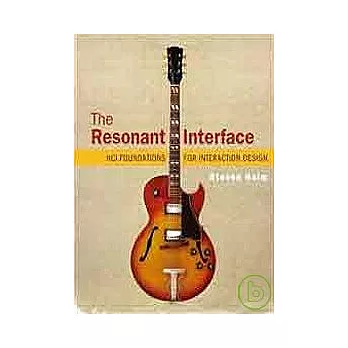








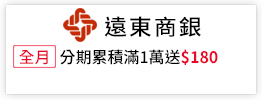





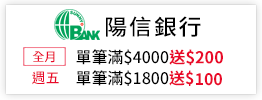



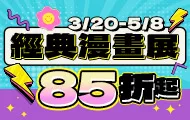

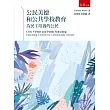
![幼兒園教保活動課程:幼兒學習評量手冊[113年03月初版9刷]](https://im1.book.com.tw/image/getImage?i=https://www.books.com.tw/img/001/098/43/0010984394.jpg&v=65eae924k&w=110&h=110)
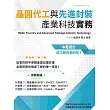
 博客來
博客來 博客來
博客來 博客來
博客來 博客來
博客來 博客來
博客來